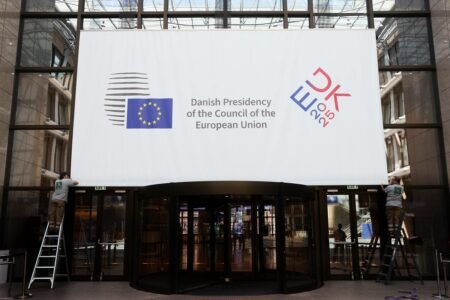— last modified 12 March 2018
Nutrition information and ingredients listing will be made available to consumers for all EU spirits, either on or off-label. spiritsEUROPE will support its members in their efforts to provide this information and will regularly assess, and report on, the use of both options over the next four years.
Today, seven trade associations representing producers of spirits, wine, cider and beer presented a joint voluntary commitment on the provision of consumer information to Health Commissioner Vytenis Andruikaitis. The document is supplemented by four annexes, detailing the implementation of the commitment for each sector.
As the Regulation currently stands, spirits producers wishing to voluntarily display nutrition information on label must do so per 100ml, which represent more than three standard servings of spirits and contradicts responsible drinking messages. This has been, and remains, a crucial problem for many operators when choosing where to display the information.
“We ask the Commission to consider allowing energy on spirits labels to be given more prominently per serving size than per 100ml, but also to require that all alcoholic beverages not habitually consumed in 100ml servings provide energy / nutrition per serving” said Ulrich Adam, Director General of spiritsEUROPE.
For spirits drinks, energy information will always be provided per portion (or single serve container) and, as required, per 100 ml. In addition, when providing information online, European spirits producers commit to go above and beyond the requirements of Regulation 1169/2011 and will provide:
- Full nutrition information for all spirits
- A list of ingredients, as well as the legal definition of every category giving consumers details of the raw materials used and the production process applied.
“Today, we are presenting an approach that is serious, flexible, and scalable. Over the next four years, we will fully support our members in their efforts to provide nutrition and ingredient information. Some companies, in particular the many SMEs active in our sector, may opt for online solutions. Others will choose to provide information on label, in addition to the information being available online. As part of our commitment to boost consumer information online, the European Travel Retail Confederation (ETRC) has been contracted to develop a Pilot Project which will make multilingual product information directly accessible to consumers, by scanning the barcode on the packaging via a smartphone, scanner facilities in-store or on-line. The Pilot’s results will be made available during the second half of 2018” said Ulrich Adam.
“Our aim is to provide harmonised and consistent information that is available to any consumer anytime, anywhere ? and in their own language. This is made possible by the rapidly evolving digital technologies and is confirmed by recent research which shows that consumers are increasingly turning to digital and mobile sources of information before, during and after shopping” added Ulrich Adam.
In the spirits Annex, spiritsEUROPE also draws attention to the important particularities of spirits that need to be taken into account when discussing the provision of nutrition and ingredient information to consumers.
In the EU, dedicated rules exist that pre-define exactly how spirits must be made, and what they can be made from. In terms of nutrition, many categories of spirits are simply a distillate of their raw material. Hence calories only come from their alcohol content and they do not contain fat, saturates, carbohydrates, sugar, protein or salt (the case is different for complex spirits, including liqueurs, where there is there is a minimum sugar requirement and other spirits using flavouring and additives).
“Given the particularities of spirits, the category name on the label of a spirit acts as an anchor of trust. It is also an added tool to provide information to consumers as different spirits brands within the same category will broadly have the same ingredients and energy content.”, Adam underlined.
The first progress report on the provision of information on label and online will be published in October 2019. spiritsEUROPE will continue to assess and report at regular intervals until 2022.







